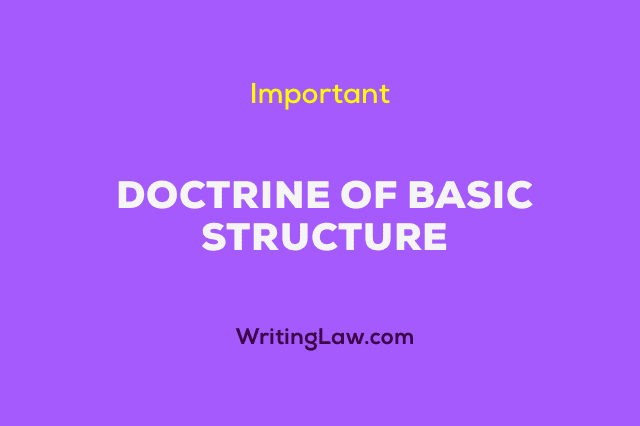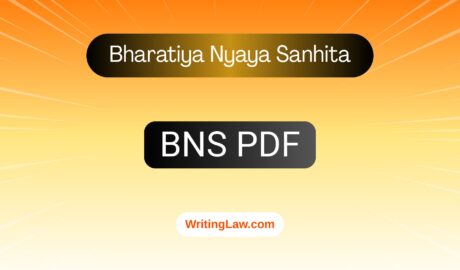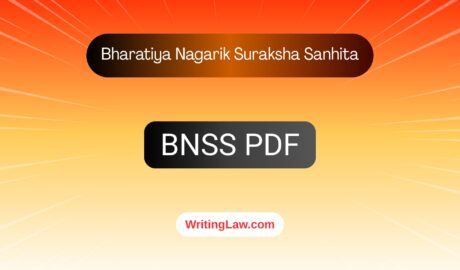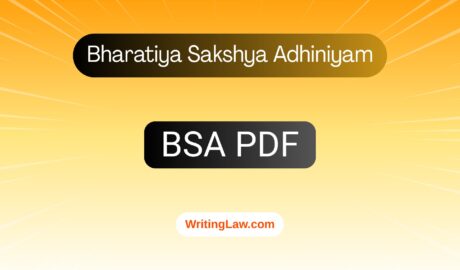
The Doctrine of Basic Structure or Feature revolves around Article 13 and Article 368 of the Indian Constitution. The whole development of basic feature/structure is a tussle between the power of judicial review and the amending power of the Constitution.
Article 13 of the Indian Constitution serves as the protector of Fundamental Rights, whereas Article 368 holds power to amend the Constitution.
Various questions regarding amendments emerged gradually after the Constitution came into force. Some of them are:
1. Can the Parliament amend the Constitution?
2. Can the Preamble be amended?
3. Can the Parliament amend the Fundamental Rights?
4. Is the amending power under Article 368 absolute?
All the above questions were answered in the following landmark judgments. These are extremely important for a person in the legal field. Take a good look.
- Shankari Prasad vs Union of India, 1951
- Sajjan Singh vs State of Rajasthan, 1965
- Golak Nath vs State of Punjab, 1967
- Kesavananda Bharti vs State of Kerala, 1973
- Indira Gandhi vs Raj Narain, 1975
- Minerva Mills vs Union of India, 1980
- Waman Rao vs Union of India, 1981
Shankari Prasad vs Union of India, 1951
The 1st Constitutional Amendment Act, 1951 was challenged in this case. There were certain laws in the amending act that were brought about, which were curtailing the right to property. To protect those laws, Article 31A and Article 31B were inserted in the Constitution.
The Supreme Court held that the word ‘law‘ in Article 13(2) includes only ordinary laws and not constituent laws.
The Parliament’s power of amending the Indian Constitution under Article 368 includes the power to amend Fundamental Rights.
Sajjan Singh vs State of Rajasthan, 1965
In this case, the 17th Constitutional Amendment Act, 1964 was challenged, which added various statutes under the IXth Schedule of the Constitution.
The court took the view of the earlier case and held that amendment of the Constitution under Article 368 means an amendment of any part of the Constitution, including Fundamental Rights.
Golak Nath vs State of Punjab, 1967
Sajjan Singh case was referred to a larger bench.
The Supreme Court held that the powers given under Article 368 of the Constitution are not absolute. The powers are subject to certain limitations and judicial review, and hence the Parliament cannot abridge Fundamental Rights, Article 13 will apply to the Constitutional Amendment Act.
Further, the ambit of Article 13 of the Constitution was discussed, and it was held that the word ‘law‘ in Article 13(2) includes amendments, and any amendment violative of Fundamental Rights would be void.
24th Constitutional Amendment, 1971
Then came the 24th Constitutional Amendment Act which was the reaction of Parliamentarians to the judgement of the Golak Nath case. The 24th Constitutional Amendment Act, 1971 amended Article 13 and Article 368 of the Indian Constitution. It declared that Parliament could amend any part of the Constitution, including Fundamental Rights as well and excluded the applicability of Article 13 onto Article 368 of the Constitution.
Kesavananda Bharti vs State of Kerala, 1973
It is popularly known as the Fundamental Rights case. The 24th, 25th, 26th, 29th Constitutional Amendment Acts and Golak Nath case were challenged. It answered the question as to what was the scope of the amendment. The 24th Constitutional Amendment Act was held valid and stated that the Parliament is empowered to abridge any Fundamental Rights.
The court gave a balanced approach and gave the Doctrine of Basic Structure. The doctrine ruled that there are certain basic features of the Constitution, and the Parliament cannot abridge Fundamental Rights that form part of the basic structure of the Constitution.
Justice Sikri gave a non-exhaustive list, and the following elements were declared as basic structure:
- Supremacy of the Constitution.
- Separation of power.
- Republic and democratic form of government.
- Secular character of the Constitution.
- Federal character of the Constitution.
- Sovereignty and unity.
- Freedom and dignity of the individual.
- Welfare state.
- Parliamentary system.
It was also held that the power to amend the Constitution is already implicit in it and that the 24th Constitutional Amendment Act merely made this explicit and declaratory. However, the basic structure cannot be amended.
Must See: Kesavananda Bharati & Others vs the State of Kerala – Case Explained
Indira Gandhi vs Raj Narain, 1975
The doctrine of basic structure evolved, and clauses 4 and 5 were added in Article 368 of the Constitution, which said that even if Part III of the Constitution is amended, it cannot be questioned in any court.
Supreme Court also held that the Parliament represents the will of the people, and if Constitution is to be amended, that can be done through the Parliament. Supreme Court said that the theory of basic structure is ambiguous and vague, and the addition of clauses 4 and 5 to Article 368 rectifies the situation.
In this case, the Supreme Court overturned a provision of the 39th Constitutional Amendment Act, 1975 that kept electoral disputes between the Prime Minister and the speaker of Lok Sabha out of the court’s jurisdiction. The court said that the provision was beyond the Parliament’s amending power as it affected the basic structure of the Constitution.
42nd Constitutional Amendment, 1977
Then came the 42nd Constitutional Amendment Act that amended Article 368 of the Constitution, stating that there is no limitation on the constituent powers of the Parliament and that no amendment can be challenged in court for any reason, including violation of Fundamental Rights.
Minerva Mills vs Union of India, 1980
The validity of the 42nd Constitutional Amendment Act and clauses 4 and 5 of Article 368 of the Constitution were challenged. The Supreme Court said that these two Articles were attacking the basic structure of the Constitution and hence held it unconstitutional. It was settled that Constitution is supreme and the Parliament cannot exercise unlimited amending powers.
Must See: Minerva Mills Ltd. and Ors. vs Union of India and Ors – Case Explained
Waman Rao vs Union of India, 1981
The Supreme Court clarified the prospective nature of the doctrine and said that the doctrine of basic structure would apply to all Constitutional Amendments enacted after 24th April 1973 (the judgement date of the Kesavananda Bharti case).
Read Next:
1. What Is the Mini Constitution of India and Changes It Added
2. Prosecution of Judges and Public Servants
3. Basic, Must-Know Introduction of the Indian Constitution
- What Is a Foreign Judgement and When It’s Not Binding in India - 26th July 2022
- What Are Second Appeals Under Civil Law - 23rd June 2022
- Civil Appeal as Per the Civil Procedure Code - 12th June 2022











